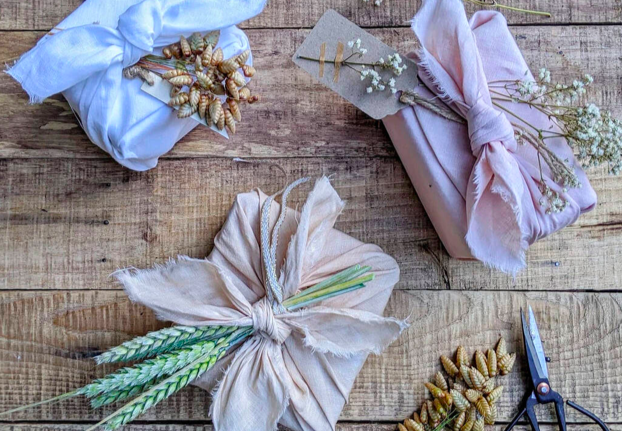As the Christmas holidays approach, presents become the center of attention for most celebrators. And with Christmas presents also comes present-wrapping. A practice that, while charming, also negatively affects the environment. Wrapping paper, seemingly innocent, is actually a demon in disguise, loaded with plastics, microplastics, and unrecyclable materials, all to be torn apart in 5 seconds and end up in a landfill, joining the wrappers of millions of other gifts given during the holidays. This could be one of those issues that make anyone think: “What can I do about it? It’s not just me that does this, right? It’s a tradition and shouldn’t be changed. Blah blah blah.”
This issue has a very chic and sustainable solution in which absolutely anyone can participate. Dating back to the 8th century B.C. the Japanese tradition of gift-wrapping, Furoshiki, is anything but boring. Intended at first for practical uses, the practice later became a form of art, and recently gained popularity across the world as an ecological way of gift-wrapping. Furoshiki is both the name for the cloth used and for the tradition, meaning “bath (furo) spread (shiki)”. The use of these cloths started in the Nara period (700 B.C.) in Japan when important goods and objects from temples were wrapped in cloth when transported, referred to as tsutsumi. Later on, in the Heian period (794-1185), the cloths were used to wrap fabric and received the name of koromo utsumi. In the Muromachi period (1136-1573) bathhouses became popular among the elite, and furoshiki cloths were used to wrap the visitor’s kimonos. The furoshiki, made out of quality textiles such as silk, were customized with beautiful designs so as to indicate to whom it belonged. As bathhouses spread to the rest of society, so did the use of furoshiki. Furoshiki also began being used for other purposes, like wrapping books, gifts, and merchandise. Nowadays, furoshiki is mainly used by Japanese children to carry their bento boxes using simpler cloths, and worldwide for gift-wrapping using more sophisticated ones.
Most importantly, this tradition is sustainable but still fashionable, and allows artistic expression when wrapping the gift. The clothes have thousands of different designs and many different ways of wrapping them depending on what you are gifting (whether it’s a bottle, something round, squared, or heavy), proving versatility. Afterward, the wrapper can be further customized by adding dried flowers or a note. Once the gift is unwrapped, instead of throwing away the wrapping, the furoshiki can be reused for many purposes; for instance, one can use it to give another present, wrapping daily objects, or using it as a new lunch bag. The possibilities are infinite! If you’re interested, they can even be found in Uniqlo or in local craft shops in Barcelona for affordable prices, ranging from 12 to 18 euros per piece. More expensive than conventional wrapping paper but cheaper for the ecosystem, furoshiki prove that one person can actually make an impact, because you spread this tradition to all those whom you give, making Christmas present-giving even more heartwarming.
This year, spread happiness without harming the environment!

